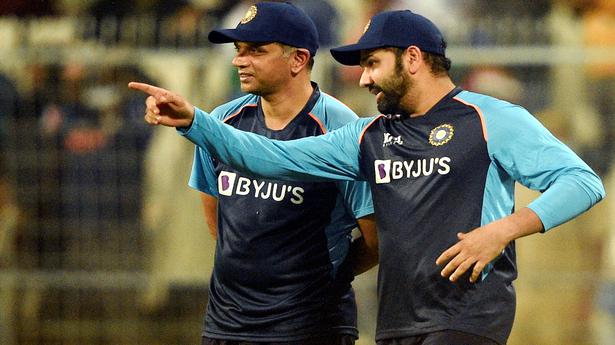The captaincy question is asked more often in cricket than many others
Skippers are most effective when their place in the side is assured and have the support of both players and officials
Skippers are most effective when their place in the side is assured and have the support of both players and officials
One of the questions cricket hasn’t been able to answer conclusively concerns the captaincy of a team. Does it require a set of special skills denied to the average player or can anyone with experience and common sense lead a side?
The Mike Brearley Syndrome haunts the game. Here was a great captain who probably might not have found a place in the England team on batting alone, yet led in 31 Tests, winning 18 of them and losing just four.
When England were struggling, he returned as captain and authored one of the most remarkable comebacks in a series, against Australia in 1981, inspiring his predecessor Ian Botham to new heights.
Only Steve Waugh and Ricky Ponting have far superior win percentages (Virat Kohli’s is marginally better), but they had the consistently superior teams.
As good as the team
One of the cliches of the game, to stand alongside the one about glorious uncertainties and the effect of catches on matches, states that a captain is only as good as his team. But a great captain can raise the performance of a middling team rather in the manner of a top driver overcoming the challenges of a mediocre car in Formula One.
The captaincy question asks itself afresh when you realise that in a little over a year, India have had seven captains across formats: Virat Kohli, Rohit Sharma, K.L. Rahul, Ajinkya Rahane, Shikhar Dhawan, Rishabh Pant, and the latest, Hardik Pandya, with Jasprit Bumrah waiting in the wings.
Injuries, birth of a child, Covid-19 protocols have led to this. Perhaps it is not such a bad thing to be able to call upon a range of captains — especially since overlapping tours are likely to become the norm if white ball cricket is granted a divorce from the red ball game in bilateral series.
When the Dhawan-led team were in Sri Lanka, Kohli-led India were in England for the series there. Of the two teams in the British isles just now, one was under Pandya in Ireland and the other in England. On the last tour of Australia, India showed they could easily field two or three international teams simultaneously.
While white ball captains can quickly emerge as contenders for the Indian captaincy — Pandya’s elevation was based on a single season of the IPL — Test captains need their time. Theoretically, of course, with 38 teams in the Ranji Trophy, there are that many potential India captains.
But not all of the 38 find a place in the team on batting or bowling skills. And although India have picked a player for his captaincy alone — the Nawab of Pataudi against the West Indies in 1974-75, after he was finished as a batsman — that is not the norm.
Support staff inpact
The Brearleys and Pataudis are exceptions, and less likely to lead now since teams travel with a huge set of coaches and technical men who crunch numbers all day, and work out weaknesses of the opposition. The captain’s role has diminished, but he will still rise or sink by the calls he makes on the field.
The support staff, unavailable to the likes of Brearley and Pataudi, does make a difference as the appointment of Brendon McCullum has made to the England team.
Yet, it is still the captain who makes the final call on the field, and with a positive, aggressive captain like Ben Stokes and the talent to back up his attitude with either bat or ball, England have shown how important the man leading is. Joe Root may be a great batsman, but England might not have won all the Tests against New Zealand in the recent series had he remained in charge.
This is an intriguing aspect of cricket, a game where most things are measurable. No one has worked out how to compute captaincy. Cricket ratings are popular, but captaincy ratings do not exist.
We look for intuition, tactical acumen, ability to get the best out of the players — none of which can be quantified. As often in cricket, the simple calculations don’t tell the full story.
Best do not always lead
The best captains do not always lead the national side. From M.L. Jaisimha and Erapalli Prasanna to Anshuman Gaekwad and Arun Lal, India have had effective captains at the First Class level who never led the country either because the incumbent was well established or they themselves couldn’t hold down a place in the national side.
When a fine tactician like Srinivas Venkatraghavan led, he was always under pressure not knowing if he had the support of his colleagues and having to look over his shoulder all the time.
Captains are most effective when their place in the side is assured, when they have the support of both players and officials. The best, however, come out on top even when conditions are against them.
For all the latest Sports News Click Here

